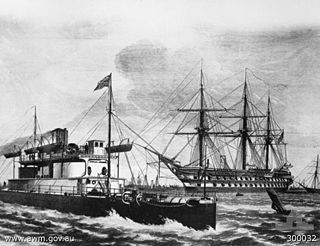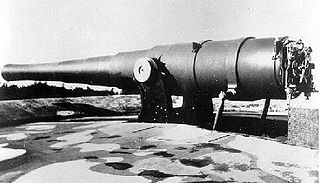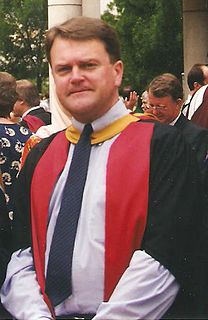
The Jervois-Scratchley reports of 1877 concerned the defences of the Australian colonies, and influenced defence policy into the twentieth century.

The Jervois-Scratchley reports of 1877 concerned the defences of the Australian colonies, and influenced defence policy into the twentieth century.
From the time of the first settlement in Australia, the Royal Marines, the New South Wales Corps and a succession of regiments of the British Army had been responsible for defending the Australian colonies. [1] With the withdrawal of British garrison troops in 1870 the various colonies moved to establish more significant defences of their own. [2]
To provide guidance, Major General Sir William Jervois and Lieutenant Colonel Peter Scratchley were commissioned by a group of colonies to advise on defence matters. The two Royal Engineers inspected each colony's defences, leading to the Jervois-Scratchley reports of 1877. [3] These were to form the basis of defence planning in Australia and New Zealand for the next 30 years.
A consequence of their reports was that colonial defences were reorganised on one model with slight variations for each colony. Wealthier colonies tended to have a higher proportion of paid permanent soldiers and militia whilst the smaller colonies opted for more volunteers. Given that a large portion of their reports concentrated on sea ports the most visible signs of their influence are the many fortifications from the 1880s and later that may be found at the entrance to the larger ports of Australia and New Zealand. These include:

HMQS Gayundah was a flat-iron gunboat operated by the Queensland Maritime Defence Force and later the Royal Australian Navy. She entered service in 1884 and was decommissioned and sold to a civilian company in 1921. She then served as sand and gravel barge in Brisbane until the 1950s, when she was scrapped. In 1958, Gayundah was run aground at Woody Point near Redcliffe, to serve as a breakwater structure.

Lieutenant General Sir William Francis Drummond Jervois was a British military engineer and diplomat. After joining the British Army in 1839, he saw service, as a second captain, in South Africa. In 1858, as a major, he was appointed Secretary of a Royal Commission set up to examine the state and efficiency of British land-based fortifications against naval attack; and this led to further work in Canada and South Australia. From 1875 to 1888 he was, consecutively, Governor of the Straits Settlements, Governor of South Australia and Governor of New Zealand.

The Australian Naval and Military Expeditionary Force (AN&MEF) was a small volunteer force of approximately 2,000 men, raised in Australia shortly after the outbreak of World War I to seize and destroy German wireless stations in German New Guinea in the south-west Pacific. The German wireless installations were ordered to be destroyed because they were used by Vizeadmiral Maximilian von Spee's East Asia Squadron of the Imperial German Navy, which threatened merchant shipping in the region. Following the capture of German possessions in the region, the AN&MEF provided occupation forces for the duration of the war. New Zealand provided a similar force for the occupation of German Samoa.

The military history of Australia spans the nation's 230-year modern history, from the early Australian frontier wars between Aboriginals and Europeans to the ongoing conflicts in Iraq and Afghanistan in the early 21st century. Although this history is short when compared to that of many other nations, Australia has been involved in numerous conflicts and wars, and war and military service have been significant influences on Australian society and national identity, including the Anzac spirit. The relationship between war and Australian society has also been shaped by the enduring themes of Australian strategic culture and its unique security dilemma.

Before Federation in 1901 five of the six separate colonies maintained their own naval forces for defence. The colonial navies were supported by the ships of the Royal Navy's Australian Station which was established in 1859. The separate colonies maintained control over their respective navies until 1 March 1901, when the Commonwealth Naval Forces was created.

Major General Sir Peter Henry Scratchley was special commissioner for Great Britain in New Guinea 1884–1885 and defence adviser for Australia.

Bare Island is a heritage-listed islet located in south-eastern Sydney, in La Perouse in the City of Randwick local government area in the state of New South Wales, in eastern Australia. The islet is located about 16 kilometres (9.9 mi) south east of the Sydney central business district, within Botany Bay, close to the bay's northern headland. Containing former fortification facilities, Bare Island was a former war veterans' home and museum and is now a historic site that was added to the New South Wales State Heritage Register on 2 April 1999 and is significant as an almost completely intact example of late nineteenth century coastal defence technology. It was designed by Sir Peter Scratchley, Gustave Morell and James Barnet and built from 1881 to 1889 by John McLeod on behalf of the NSW Department of Public Works.

The Australia Station was the British, and later Australian, naval command responsible for the waters around the Australian continent. Australia Station was under the command of the Commander-in-Chief, Australia Station, whose rank varied over time.

Fort Queenscliff, in Victoria, Australia, dates from 1860 when an open battery was constructed on Shortland's Bluff to defend the entrance to Port Phillip. The Fort, which underwent major redevelopment in the late 1870s and 1880s, became the headquarters for an extensive chain of forts around Port Phillip Heads. Its garrison included volunteer artillery, engineers, infantry and naval militia, and it was manned as a coastal defence installation continuously from 1883 to 1946. The other fortifications and armaments around the Heads were completed by 1891, and together made Port Phillip one of the most heavily defended harbours in the British Empire.

Until Australia became a Federation in 1901, each of the six colonies were responsible for their own defence. From 1788 until 1870 this was done with British regular forces. In all, 24 British infantry regiments served in the Australian colonies. Each of the Australian colonies gained responsible government between 1855 and 1890, and while the Colonial Office in London retained control of some affairs, and the colonies were still firmly within the British Empire, the Governors of the Australian civilisation were required to raise their own colonial militia. To do this, the colonial Governors had the authority from the British crown to raise military and naval forces. Initially these were militias in support of British regulars, but British military support for the colonies ended in 1870, and the colonies assumed their own defence. The separate colonies maintained control over their respective militia forces and navies until 1 March 1901, when the colonial forces were all amalgamated into the Commonwealth Forces following the creation of the Commonwealth of Australia. Colonial forces, including home raised units, saw action in many of the conflicts of the British Empire during the 19th century. Members from British regiments stationed in Australia saw action in India, Afghanistan, the New Zealand Wars, the Sudan conflict, and the Boer War in South Africa.

The Ben Buckler Gun Battery is a heritage-listed fortified former gun emplacement and military installation of the late-Victorian period and now public open space located in the North Bondi locality of Ben Buckler, in the Waverley Municipality of Sydney, New South Wales, Australia. The gun battery was designed by NSW Colonial Government and built during 1893. It is also known as Ben Buckler Gun Battery 1893, 9.2 Disappearing Gun and Bondi Battery. The property is owned by Waverley Municipal Council. It was added to the New South Wales State Heritage Register on 15 December 2006.

Fort Glanville Conservation Park is a protected area located in the Australian state of South Australia located in Semaphore Park, a seaside suburb of Adelaide consisting of a functional 19th century fort listed on the South Australian Heritage Register and some adjoining land used as a caravan park. The fort was built after more than 40 years of indecision over the defence of South Australia. It was the first colonial fortification in the state and is the best preserved and most functional in Australia. Fort Glanville was designed by Governor Major General Sir William Jervois and Lieutenant Colonel Peter Scratchley, both important figures in early Australian colonial defence. When built it was designed to defend both Semaphore's anchorage and shipping entering the Port River from naval attack.

The military history of Australia during the Boer War is complex, and includes a period of history in which the six formerly autonomous British Australian colonies federated to become the Commonwealth of Australia. At the outbreak of the Second Boer War, each of these separate colonies maintained their own, independent military forces, but by the cessation of hostilities, these six armies had come under a centralised command to form the Australian Army.
Fort Largs is a historic defence site in the seaside suburb of Taperoo near Port Adelaide, approximately 18 km (11 mi) north west of Adelaide's centre. In the 1960s it was repurposed for use as the South Australian Police Academy. In 2012, new police academy housing was constructed on the east portion of the site and in 2014 the west portion of the site, including the historic defence constructions, was slated for redevelopment. In June 2016, Renewal SA announced AVJennings as its preferred tenderer for the redevelopment of part of the site for about 250 homes, with the heritage-listed WW II barracks to be converted to apartments, the Drill Hall to be retained as a community facility, and the historic fort to be owned and operated by the National Trust of SA.
The Australian Squadron was the name given to the British naval force assigned to the Australia Station from 1859 to 1911.

Fort Cowan Cowan is a heritage-listed World War II fortification at 30 Jessie Wadsworth Street, Moreton Island, City of Brisbane, Queensland, Australia. It is also known as RAN 3 Cowan Cowan, Fort Cowan and Cowan Cowan Battery. It was added to the Queensland Heritage Register on 1 October 2007.

The Australian Army was the largest service in the Australian military during World War I. The First Australian Imperial Force (AIF) was the Army's main expeditionary force and was formed from 15 August 1914 with an initial strength of 20,000 men, following Britain's declaration of war on Germany. Meanwhile, the separate, hastily raised 2,000-man Australian Naval and Military Expeditionary Force (AN&MEF), landed near Rabaul in German New Guinea on 11 September 1914 and obtained the surrender of the German garrison after ten days; it later provided occupation forces for the duration of the war. In addition, small military forces based on the pre-war Permanent Forces and part-time Citizen Forces were maintained in Australia to defend the country from attack.

Jeffrey Guy Grey was an Australian military historian. He wrote two volumes of The Official History of Australia's Involvement in Southeast Asian Conflicts 1948–1975, and several other high-profile works on Australia's military history. He was the first non-American to become the president of the Society for Military History, but is perhaps best known as the author of A Military History of Australia.

Green Hill Fort is a heritage-listed fortification at Chester Street, Thursday Island in the Torres Strait, Queensland, Australia. The fort is important in Australian military history as a strategic coastal defence installation in the period of transition from British to Australian responsibility for defence. The 1885 confrontation between Britain and Russia, which almost resulted in open conflict, galvanised the Australian colonies to jointly fund construction of the fortifications, and these represent an important and uncommon instance of pre-Federation Colonial cooperation on defence in the "national" interest. The fort was added to the Australian Commonwealth Heritage List on 28 May 2008.